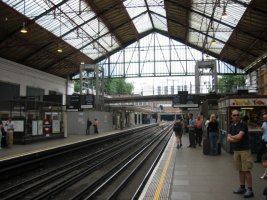
MAN NG-313 35790
Location: Herzl Street at the main gate of the Weizzmann Institute, Rehovot, Israel
Operator of Vehicle: Egged
Date of Photo: May 15, 2011
Today, the State of Israel marks the 69th anniversary of its independence. One way in which the country celebrates this day is by decorating balconies, streets, and even cars (among other things) Israeli flags or just blue and white decorations of any sort. Therefore, if one is taking pictures of just about any streetscape in Israel at this time of year (whether it be of buses or something else), it is hard to not capture some of these decorations in the photo, as I did here.
Although the State of Israel was founded in 1948, Egged, its primary bus operator, traces its history back to 1933. In its earliest days, some of its buses even traveled to Syria, Lebanon, Transjordan, Egypt, and Iraq. A more recent international route, a Tel Aviv-Cairo route, operated from 1982 until 1996. However, Egged’s presence has always been strongest within Israel itself, and at one time just about every bus line outside of the Tel Aviv area was operated by Egged. In recent years, the government has opened up the bidding process to operate these services to more companies, and Egged now only operates about 37 percent of scheduled bus services in Israel. However, it still remains the largest operator.
For more photos of Egged buses in Rehovot, please click here.




